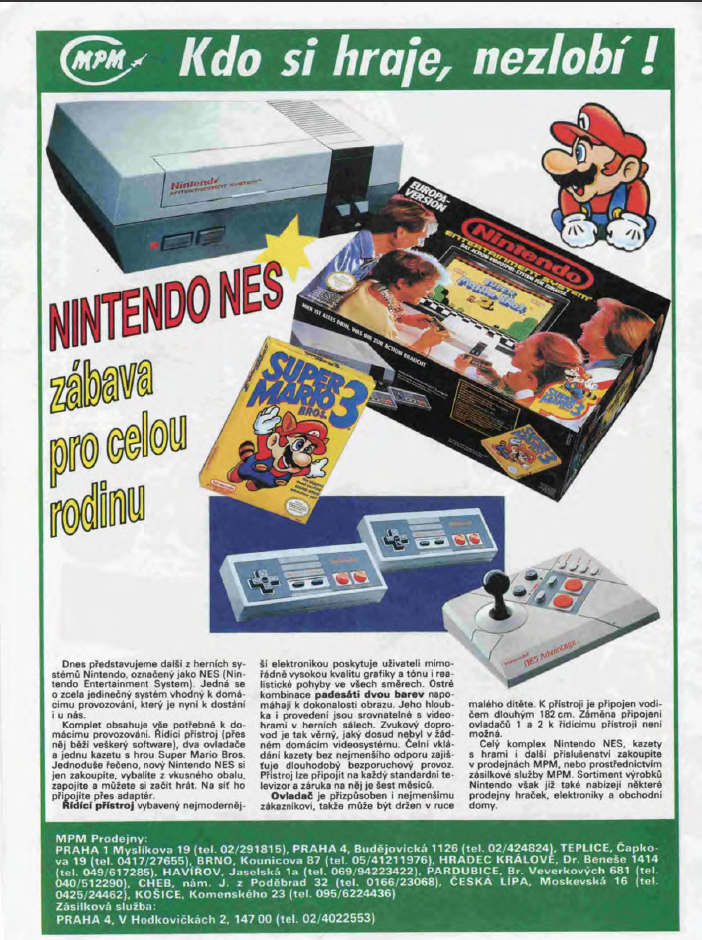Platform: Super Nintendo Entertainment System
Uniracers
Battle Clash
Daze Before Christmas
SimCity
The Twisted Tales of Spike McFang
WeaponLord
Super Mario FX
ESPN National Hockey Night
Kid Kirby
Ultimate Mortal Kombat 3
Pocky & Rocky
Superman
New Trivia!
Bubsy II
Mortal Kombat II
Fatal Fury 2
Populous
Mortal Kombat 3
Kirby's Dream Course
WWF Raw
Home Improvement: Power Tool Pursuit!
NBA Live 95
Chrono Trigger
The Hunt for Red October
Pac-In-Time
RoboCop Versus the Terminator
Obitus
Sailor Moon
Super Mario World
Inspector Gadget
Captain Commando
Art of Fighting
Virtual Bart
Teenage Mutant Ninja Turtles: Tournament Fighters
Disney's Pinocchio
Arcana
Beethoven: The Ultimate Canine Caper!
Yoshi's Safari
Saturday Night Slam Masters
Kirby Super Star
Battletoads
Cool World
Earthworm Jim
Tetris Attack
Super Punch-Out!!
Maui Mallard in Cold Shadow
Shadowrun
Pushover
Disney's Goof Troop
The Itchy & Scratchy Game
The Legend of Zelda: A Link to the Past
Viewing Single Trivia
▲
2
▼
Popular conceptions about Nintendo's release history in Europe claim that their hardware was never released in the former Eastern Bloc until the 21st century. Rather, these countries instead saw the proliferation of various clone consoles called "Famiclones", such as the Dendy (a Taiwanese-built bootleg that achieved widespread popularity in the Commonwealth of Independent States, made up of the ex-republics of the former Soviet Union) and the Pegasus (which became as popular in Poland as the Dendy did in Eastern Europe). However, while Famiclones did indeed dominate the Eastern European gaming market during the 1990s, Nintendo was not only aware of this, but actively attempted to halt the spread of bootlegs in these regions in favor of officially sanctioned products.
In 1994, Nintendo made a deal with Steepler, the Dendy's distributor in Eastern Europe, to permit continued sale of the Dendy in exchange for equal distribution of the Super Nintendo Entertainment System and Game Boy in the Commonwealth of Independent States; official Russian releases of these systems even included Dendy stickers on the packaging to reflect the arrangement. Meanwhile, in various other parts of the former Eastern Bloc, Nintendo made deals with other third-party distributors; among others, the NES, SNES, and Game Boy saw official releases in Poland, Hungary, and the former territories of Yugoslavia and Czechoslovakia during 1993–1994.
In 1994, Nintendo made a deal with Steepler, the Dendy's distributor in Eastern Europe, to permit continued sale of the Dendy in exchange for equal distribution of the Super Nintendo Entertainment System and Game Boy in the Commonwealth of Independent States; official Russian releases of these systems even included Dendy stickers on the packaging to reflect the arrangement. Meanwhile, in various other parts of the former Eastern Bloc, Nintendo made deals with other third-party distributors; among others, the NES, SNES, and Game Boy saw official releases in Poland, Hungary, and the former territories of Yugoslavia and Czechoslovakia during 1993–1994.
Joshua Rogers video about Nintendo in Eastern and Central Europe:
https://www.youtube.com/watch?v=q75Re7deJC0
Russian-language articles about the Nintendo/Steepler deal:
https://web.archive.org/web/20190427025842/https://www.kommersant.ru/doc/94004
https://web.archive.org/web/20240601223552/https://dtf.ru/games/970617-legenda-o-slone-kak-it-kompaniya-steepler-sozdala-dendy-i-osnovala-rossiiskii-konsolnyi-rynok
https://www.youtube.com/watch?v=q75Re7deJC0
Russian-language articles about the Nintendo/Steepler deal:
https://web.archive.org/web/20190427025842/https://www.kommersant.ru/doc/94004
https://web.archive.org/web/20240601223552/https://dtf.ru/games/970617-legenda-o-slone-kak-it-kompaniya-steepler-sozdala-dendy-i-osnovala-rossiiskii-konsolnyi-rynok
Comments (0)
You must be logged in to post comments.
